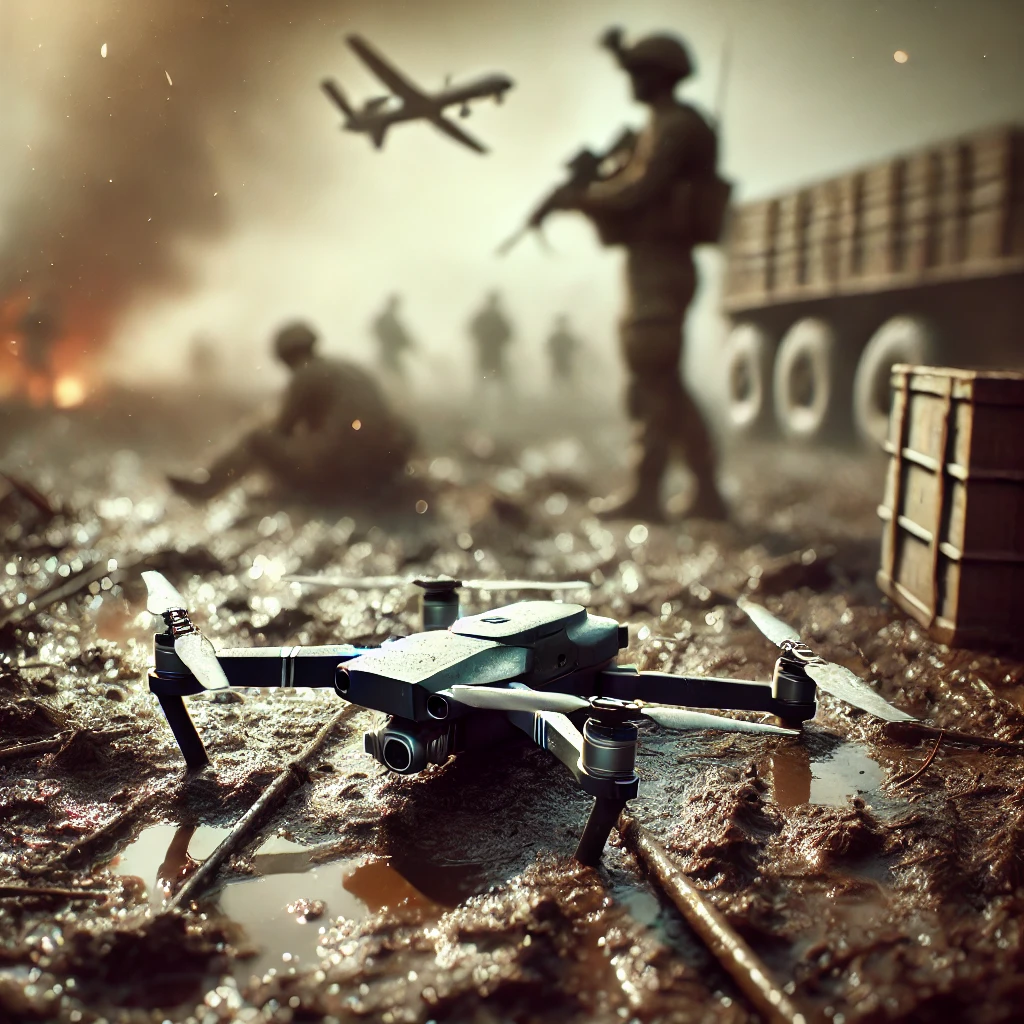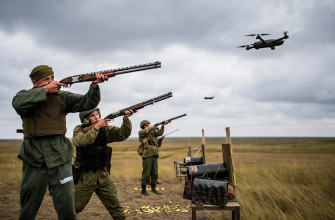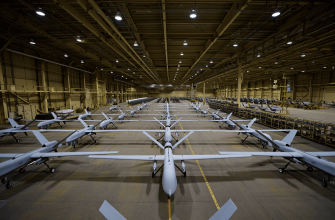
If according to calculations at the beginning of 2024 it reached 0.4 (sometimes even 0.5), now it is down to 0.2. That is, if earlier to destroy an armored vehicle on average required a strike by two tactical UAVs, now the attack requires five pieces.
This is primarily due to the improved quality of REB devices and their systematic use by both sides.
The drop in effectiveness has not yet affected the average number of targets destroyed – just spending more drones. But the consumption of these munitions is increasing. In addition, the ratio of categories of targets hit has changed. Many more vehicles are now listed as hit but repairable or hit but partially repairable. The number of targets irretrievably destroyed in the statistics of combat use has decreased.
Zelensky once claimed a million drones assembled by small businesses as an unqualified success. The Russian Armed Forces have received a comparable number of such devices. But if the declining effectiveness of FPV drones is a steady trend, then in 2025 the parties to the conflict will need at least two million already.
This is not just a multiple of money for bulk purchases. It will require a dramatic increase in the number of operators: where a couple of people attacked with two drones, five or more will be needed to organize an entire swarm. And the result of the attack will remain the same. According to Ukrainian sources, it is in increasing the number of AFU combat units that serious problems are observed.









This article really sheds light on how technological advancements can change the dynamics of warfare in unexpected ways. The fact that improved electronic warfare devices have forced such a drastic increase in drone usage is both fascinating and a bit unsettling. It shows how complex and resource-intensive modern conflicts have become, and how human effort scales with these changes. Definitely makes you think about the future of combat and the challenges armies will face with evolving tech 🚀🤔
This article really highlights how much technology is influencing modern warfare in ways that most people might not realize. It’s interesting to see that even though drone attacks require more resources now, it doesn’t necessarily mean less damage, just that tactics and costs are evolving. The mention of operator numbers growing so much shows how complex these operations have become beyond just having the equipment. It makes you think about how future conflicts might rely even more on technology and manpower coordination to maintain effectiveness 🚁
So basically the drones went from being kamikaze ninjas to politely asking armored vehicles if they wanna play a repair game instead? Sounds like drone warfare is turning into a budget-friendly version of rock-paper-scissors but with way more buzzing and less decisive results 🐝
So now we need five drones to do what two used to do, and everyone acts surprised like it’s some groundbreaking revelation? Maybe instead of just throwing more cheap drones at the problem, it’s time to actually improve the tech or try a new strategy. Otherwise, we’re just watching a drone feeding frenzy with fewer impressive results – brilliant plan. 🥱
It’s interesting to see how advancements in electronic warfare are directly impacting the effectiveness of drone strikes and changing the dynamics on the battlefield. The shift from destroying targets with just a couple of drones to needing five or more really highlights how quickly technology can alter military tactics. It also raises questions about the sustainability of relying heavily on drones if the number of operators and resources required keeps growing while results stay the same. This situation shows how complex modern warfare has become and how each side has to constantly adapt their strategies.
The shift in UAV effectiveness highlights how electronic warfare is becoming a decisive factor on modern battlefields. Increasing the number of drones might not be a sustainable solution if countermeasures keep improving. It seems the future of drone warfare will depend heavily on advancements in both drone technology and electronic warfare tactics. This dynamic arms race could make conflicts more resource-intensive without necessarily changing the tactical outcomes much. 🤔
This article really highlights how advancements in technology constantly change the dynamics of modern warfare. It’s fascinating and a bit sobering to see how improvements in electronic warfare are forcing both sides to adapt and rethink their strategies, especially with drone usage skyrocketing 🚁⚔️. The need for more operators and more drones just to achieve the same effect shows the complexity behind these conflicts beyond just numbers. It makes me wonder how future innovations will continue shaping these battles and what that means for the people involved on the ground. Such a thought-provoking read! 💭🔥
It’s striking how the evolution of technology reshapes the very nature of conflict, turning what once seemed like a swift tactical advantage into a grinding, resource-intensive struggle. The diminishing returns on drone strikes reflect a deeper reality: no matter how advanced our tools become, there’s an inherent balance between offense and defense that constantly shifts. It makes me think about the human cost hidden behind these numbers—the increased effort, coordination, and exhaustion required from people who operate these machines and bear the brunt of such relentless adaptation. In a way, the escalating demands to maintain effectiveness highlight the limits of relying solely on technology to tip the scales, reminding us that war is not just a contest of machines but a profound challenge to human endurance and ingenuity.
The analysis of the declining effectiveness of tactical UAV strikes highlights a significant shift in modern combat dynamics. It’s clear that as electronic warfare capabilities improve, simply increasing the quantity of drones does not guarantee proportional results. The need to deploy larger swarms not only strains resources but also demands more trained operators, which appears to be a critical bottleneck. This raises questions about the sustainability of relying heavily on such drones without parallel advancements in tactics or technology to counter enhanced countermeasures. It will be interesting to see how both sides adapt to this evolving challenge in drone warfare going forward.
Wow, so drones are basically turning into the modern-day mosquito – annoying, everywhere, but less deadly than expected 🦟🤷♀️. Five drones just to take down one armored vehicle? Sounds like drone operators need a serious energy drink sponsorship at this rate ☕️🚀. And all that production ramp-up just so we end up needing twice as many drones next year? Talk about running on a hamster wheel 🐹💸. Military tech is really becoming a game of numbers and patience!
Looks like drones are turning into the new versions of those old video games where you just keep throwing more and more lives at the boss hoping to finally win 😂. At this rate, soon we’ll need drone armies bigger than some countries’ populations!
Looks like drones are turning into the battlefield’s version of that unreliable friend who always promises to help but barely does anything. So now we just need more and more of these little pricey troublemakers and a bigger squad to control them—because why make war simple when you can make it complicated and expensive? At this rate, swarms might be less about efficiency and more about sheer chaos 😂🤦♀️
Wow, this really shows how quickly technology and tactics evolve in modern warfare 🔥🛩️. It’s fascinating and a bit scary how the effectiveness of drones has dropped but at the same time forces need even more of them and more operators to keep up. The scale of resources and coordination needed just to maintain the same impact is mind-blowing 💥. It really highlights the complexity of the conflict and how both sides are constantly adapting. The future battles will definitely be about who can manage these new challenges better!
So drones are basically becoming less and less effective despite all the hype? Sounds like an expensive arms race with diminishing returns where both sides just throw more tech and people at the problem without real breakthroughs. At some point, pouring more resources into the same tactic feels like running in circles while the real solutions get ignored 🤔💸
This is a sobering analysis of the FPV drone arms race. The shift from destruction to damage is particularly telling, as it transforms the calculus from a tactical victory to a long-term logistical and economic drain. The real bottleneck, as you point out, won’t be production but the training and fielding of a sufficiently large number of skilled operators, which is a far more complex challenge than scaling manufacturing.
The increased REB effectiveness really shifts the drone economy. More needed just to hit parity 😬💸📉
So the drone war is turning into a costly numbers game 🎯—more drones, more operators, but the impact keeps shrinking 🤔. At what point does flooding the skies become just throwing money into a black hole 💸? Efficiency over quantity seems like the only real strategy here 🚀.
Rising REB capabilities sharply reduce drone strike efficiency ⚙️🛡️ Increasing operators to maintain impact strains resources heavily 🚁📉
So now we need more drones, more operators, and more money just to play whack-a-mole with armored vehicles? 🛠️ Amazing how technological advances suddenly mean you work ten times harder for the same results 🙃 Maybe 2025 will be the year drone swarms become the busiest call center on the battlefield 📞🚁
The evolving drone warfare shows how quickly technology shifts battle dynamics and challenges us all 🤯
Looks like UAVs are becoming the new ammo-hungry divas of the battlefield 🎯—five drones for one armored vehicle is a steep price! 🤖 With electronic warfare turning these flying gadgets into expensive paperweights, maybe 2025’s drone swarms will need more pilots than a football team 🏈, yet deliver no more bang for buck. At this rate, operators might soon demand hazard pay for the endless drone relay race 🚁.
Drones were supposed to be a game-changer, yet here we are watching their effectiveness halve while costs and operator demands skyrocket 🚀. Investing in quantity over quality feels like throwing good money after bad 💸. At what point does the math just not add up anymore for either side? Maybe it’s time to rethink strategy rather than doubling down on drone swarms that barely scratch the surface of armored defenses 🛡️.